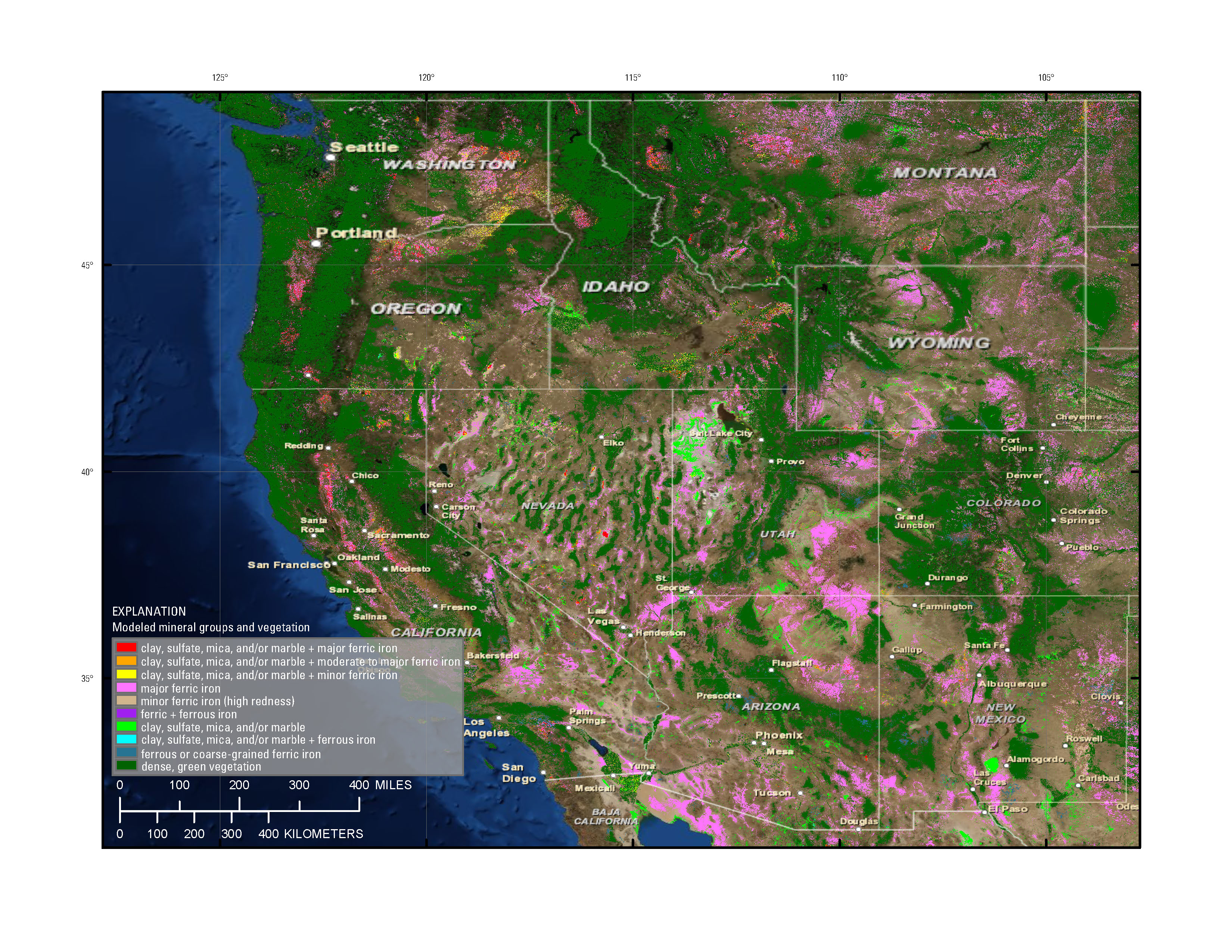Ongoing USGS national-scale mineral resource and geoenvironmental assessments require an efficient and accurate means of mapping and characterizing mineral exposures related to mined and unmined hydrothermally altered rocks and mine waste. The presence and mineralogy of altered rocks are important factors in determining the occurrence potential of concealed mineral deposits. Investigations at the deposit and watershed scales have described the importance of sulfide-bearing altered rocks and mine waste as diffuse sources of acidic solutions that can transport metals into the hydrologic system. These rocks and waste materials contain minerals that can be identified using spectral analysis of satellite remote sensing data.
The efficacy of airborne spectroscopic, or “hyperspectral,” remote sensing for geoenvironmental watershed evaluations and deposit-scale mapping of exposed mineral deposits has been demonstrated (http://pubs.usgs.gov/pp/1651/downloads/Vol1_combinedChapters/vol1_chapE2.pdf). However, the acquisition, processing, and analysis of such airborne data at regional and national scales can be time and cost prohibitive. Multispectral remote sensing data such as those acquired by the ASTER and Landsat 7 ETM+ sensors are being analyzed by new, automated algorithms to efficiently generate uniform maps of minerals and green vegetation over large areas of the United States and its territories in support of various USGS projects. New algorithms are currently being developed to incorporate new data acquired by Landsat 8, which include additional spectral bands that will enhance the ability to remotely identify minerals associated with sulfide oxidation.
A new, public Web site (http://cmerwebmap.cr.usgs.gov/usminmap.html) has been developed as a portal to online mapping applications that enable visualization of the automated mineral and vegetation mapping products covering the western United States and the Pebble Cu-Au-Mo porphyry deposit in Alaska. The underlying map services can be accessed using ArcMap for integration with other geospatial data. Preliminary products covering the southwestern United States, derived from automated analysis of Landsat 8 data, are available for display and analysis for USGS personnel via internal Web applications and services.
http://cmerwebmap.cr.usgs.gov/usminmap.html

Map of the western United States showing mineral groups and green vegetation derived from automated analysis of Landsat 7 ETM+ multispectral remote sensing data.

